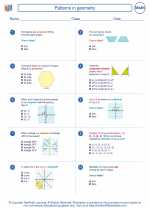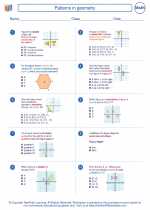Centroid: Explanation and Study Guide
The centroid of a geometric figure is the point at which all the individual centroids of its component parts balance each other. In the context of a triangle, the centroid is the point where the three medians intersect. The median of a triangle is a line segment joining a vertex to the midpoint of the opposite side.
To find the centroid of a triangle with vertices A(x1, y1), B(x2, y2), and C(x3, y3), the coordinates of the centroid (G) can be calculated using the following formulas:
For the x-coordinate of the centroid:
Gx = (x1 + x2 + x3) / 3
For the y-coordinate of the centroid:
Gy = (y1 + y2 + y3) / 3
It's important to note that the centroid of a triangle divides each median in a 2:1 ratio. This means that the distance from the centroid to a vertex is twice the distance from the centroid to the midpoint of the opposite side.
Study Guide
To study and understand the concept of centroid, it's important to focus on the following key points:
- Understanding the definition of centroid as the point of intersection of the medians of a triangle.
- Memorizing the formulas for calculating the coordinates of the centroid of a triangle.
- Practicing the application of the centroid concept in solving problems related to triangles.
- Recognizing the 2:1 ratio property of the centroid in relation to the medians of a triangle.
Additionally, solving sample problems and working through exercises involving the centroid will help in reinforcing the understanding of this concept.
.◂Math Worksheets and Study Guides Eighth Grade. Patterns in geometry

 Worksheet/Answer key
Worksheet/Answer key
 Worksheet/Answer key
Worksheet/Answer key
 Worksheet/Answer key
Worksheet/Answer key
